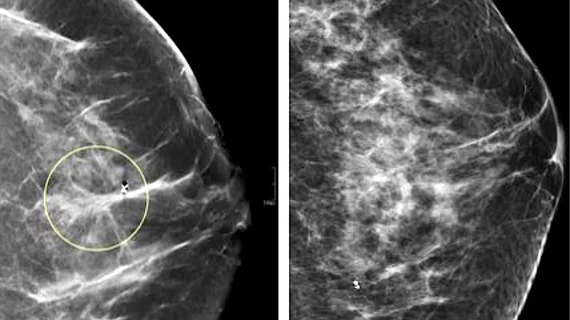DBT exams take twice as long to read as 2D mammograms, but the learning curve is short
It takes many radiologists twice as long to read digital breast tomosynthesis (DBT) screening exams compared to full-field digital mammography (FFDM).
However, as readers gain experience interpreting DBT exams, they also gain speed, according to a new analysis published in the European Journal of Radiology.
The improved cancer detection rates of DBT systems have fueled rapid growth of the technology in the U.S. DBT systems now account for around half of all the active mammography equipment in the country.
Although DBT exams are proven to identify more difficult to detect cancers, especially among women with dense breasts, they also include significantly more images than standard 2D mammograms, inevitably increasing radiologists' workloads.
“The pseudo-3D DBT images contain much more visual information, taking a longer time to interpret and demanding greater cognitive resources from the reader, potentially leading to greater fatigue, compared to FFDM,” corresponding author Yan Chen, with the University of Nottingham School of Medicine, and colleagues explained. “Many countries are already experiencing a shortage of mammography readers together with an increasing workload, and implementing DBT as the standard screening modality in these circumstances could exacerbate an already challenging situation.”
This is why understanding the time burden of interpreting DBT exams warrants attention, the authors continued.
To achieve this, the group analyzed reading time data from a large clinical trial comparing DBT and FFDM. Over a four-year period, the trial produced more than 34,000 FFDM cases and around 14,000 DBT cases, all interpreted by 48 readers.
The data showed DBT reading times as double that of FFDM (2.09 ± 0.64 min vs. 0.98 ± 0.30 min). However, this improved as readers gained experience. On average, reading times improved (by around 22 seconds) after less than nine months of accrued screening experience, and radiologists with five or more years of experience recorded times similar to those seen in typical FFDM interpretations.
“Comprehensively understanding DBT reading times in the breast screening setting is invaluable when making informed decisions to implement screening DBT,” the authors noted, adding that, despite the longer interpretation times for DBT exams, the relatively short learning curve should be taken into consideration when making decisions about switching to 3D systems.
The study abstract is available here.

